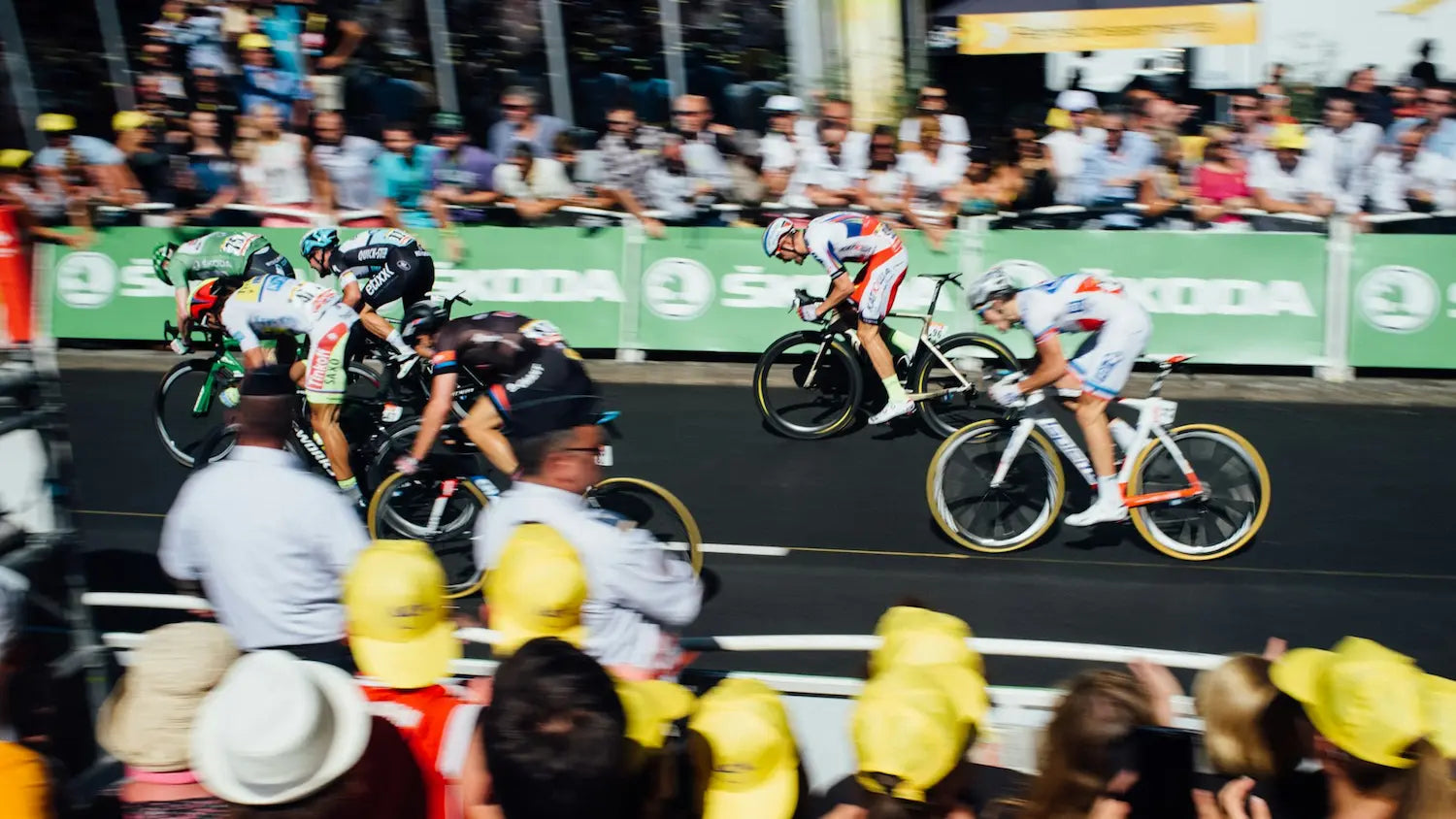The route of the 2025 Tour de France has just been unveiled and the four distinctive jerseys will once again be up for grabs. But do you know what each Tour de France jersey represents and do you know their history? To celebrate the release of our collection of Tour de France posters , we'll explain everything!
The yellow jersey: the ultimate cycling accolade
The most prized is the overall winner's jersey: the yellow jersey. It is based on the overall classification; the rider who, after all the stages, has taken the shortest time will wear the leader's yellow jersey. This legendary jersey first appeared in 1919, and its color is a reference to the newspaper "L'Auto," now "L'Équipe," which created this race.
The favorites for the 2025 Tour are, as they have been for several years, Tadej Pogacar and Jonas Vingegaard, with the young Remco Evenepoel as an outsider. The "queen" stages will be the scene of their confrontation and will decide the outcome of this Tour. We can therefore note stages 13, 14 and 16, with passages through legendary passes, summit finishes and a time trial.
The polka dot jersey: the climbers' goal
This jersey simply rewards the best climber in the Tour de France. It was introduced in 1975 to honor the rider who best performs on the slopes of the French mountain passes. To wear it, you must be in the top positions as often as possible at the top of the climbs along the route. The more difficult the climb, the higher the number of points to be earned. The total points are calculated as a ranking, placing one rider in the lead.
Where does this polka dot jersey come from?
The white with red polka dots was chosen by Félix Lévitan, co-director of the Tour de France at the time, in homage to Henri Lemoine, a track cyclist who had taken inspiration from jockeys for his racing outfit, earning him the nickname “P'tit pois”.
The green jersey: the reward for sprinters
The green jersey is based on the points classification and is commonly referred to as the best sprinter's jersey, a specialty of some riders on the Tour de France. During the final sprints or "intermediate sprints," the riders with the highest top speeds battle to cross the finish line in the top positions to collect as many points as possible and be able to wear this jersey.
First introduced in 1953, this iconic green color comes from its first sponsor, La Belle Jardinière. This color has a “king”: Peter Sagan, record holder for the number of green jerseys won on the Champs-Élysées.
The white jersey: a first title for the youngsters
The white jersey is the easiest to understand since it is the same classification as the yellow jersey, but only includes riders under 25 years old. In other words, the white jersey is worn by the best young rider.
Appearing in 1975 at the same time as the polka dot jersey, it was not, however, initially intended for young prodigies, but was the result of the accumulation of the three other classifications, namely points (green jersey), climber (polka dot jersey), and general classification (yellow jersey). For the 2025 edition, the rider Carlos Rodriguez should be the big favorite.
Do you still have questions about how the distinctive jerseys work on the Grande Boucle? Here's a video created by the organization:










Leave a comment
All comments are moderated before being published.
This site is protected by hCaptcha and the hCaptcha Privacy Policy and Terms of Service apply.